|
Ayo Edebiri and Jeremy Allen White in season two of "The Bear" (2023) When the first season of a returning show captures lightning in a bottle, the question becomes, how will the next chapter live up to its various measures of expectation? Culinary smash hit “The Bear,” created by Christopher Storer, sets the bar high in its first season. A work of fiction feels like a documentary; every ingredient from the impeccable writing to the immersive acting evokes an energy that hooks you in from the start. Jeremy Allen White plays a young chef risen from the ashes, shoved through the world of fine dining, and pulled towards his family’s scrappy Chicago sandwich shop under mournful circumstances. Amidst the kitchen frenzy, however sticky and stressful things get, White’s yearning stares into the distance ground everything into place. This restaurant means something. And because he and the kitchen team have so much stock in the place, every little mishap feels like the entire world is crashing down.
The restaurant’s meaning depends on any given character’s perspective. How do they measure success? Where do they find themselves on the never-ending journey of self-discovery and growth? These are questions that the show smartly continues to explore in its second season, for the bedrock of “The Bear” has always been its characters. From the precise words on the page to the actors who interpret and embody them, their roles are the main ingredient as to why “The Bear” resonates. By building onto them and expanding their personal worlds outside of the kitchen, the writing of season two not only surpasses expectations, but creates a new recipe for success. The boiling, frenetic stress ball of season one is brought to a simmer in season two. Intimate character-driven episodes serve up a mostly soothing departure from clattering pots and pans. That is, until you swim with the Berzatto fishes in episode six… Season two continues the chaos-ridden saga of Carmen ‘Carmy’ Berzatto (White). The environment this time around is more contemplative and slightly less anxiety-inducing. The show picks up where season one leaves off — promising the birth of ‘The Bear’ (Carmy’s nickname), after the closure of ‘The Beef’ which was owned by Carmy’s late brother Mikey (Jon Bernthal). As Carmy and the team clean out shop to create a fine-dining Michelin star-worthy restaurant, they face numerous road blocks along the way, from outdated infrastructure to failed safety inspections. But in the process of starting over, they unearth new layers about themselves. When the pressures of the kitchen are stripped back, so too are the characters inhabiting that space. The writers take them beyond the environment you had been accustomed to seeing them in. Over the course of ten episodes, characters are coming into their own. Their personal experiences, family dynamics, and support systems are explored with a ton of heart, humor, and intensity. From Carmy’s culinary influence on the team, and subtle callbacks evoking the first season, to the ferocious dialogue of a holiday dinner gone sour. Piece by piece, the writers of “The Bear” dig deeper into the characters’ lives while maintaining a recurring theme: it is never too late to have a breakthrough. Every second counts. That has never been more felt than in these standout moments of the season. ***SPOILERS AHEAD FOR “THE BEAR”*** “Pasta” (episode two) Written by Christopher Storer, Joanna Calo, Sofya Levitsky-Weitz Twelve weeks out from ‘The Bear’ opening, Sydney ‘Syd’ (Ayo Edebiri) delivers the news that Tina (Liza Colón-Zayas) and Ebraheim ‘Ebra’ (Edwin Lee Gibson) are being sent to culinary school to sharpen their skills. Tina beams with excitement while Ebra is hesitant. The difference in their reactions — one looking forward to change, the other afraid of it — is a great depiction of the restaurant’s transformative power over the people who help run it. Change and opportunity are spinning by; either you take the leap and fill your sidelines with support, or find yourself behind. Many characters are wrestling between old and new support systems in this episode. During a family dinner between Syd and her father (Robert Townsend), when she shares her excitement about the new restaurant opening and he struggles to take her profession seriously, she reminds him that she is in a different place: one where she is still learning and not alone; she has a partner. Nearing the end of this episode, her partner Carmy and his ex-girlfriend, Claire (Molly Gordon), reconnect at a grocery store. Claire walks into his life when he is on the cusp of newness and in need of positive influence, but he keeps waiting for the other shoe to drop. By introducing this new character, the writing expands on Carmy’s past and evokes the feeling of him being almost frozen in time. As well, the choice to set their conversation by a freezer is a neat example of the season’s strength in planting moments that come full circle later on (in this case, the season finale). “Sundae” (episode three) Written by Karen Joseph Adcock, Catherine Schetina, Christopher Storer Eleven weeks out from ‘The Bear’ opening, Syd and Carmy work on the new menu. Their attempts to figure out which dishes to serve fall apart. After a little too much of this and not enough of that, Carmy suggests that they both go out and try some stuff. They need to reset their palates and find culinary inspiration. But he ditches the plan after an impromptu phone call from Claire, leaving Syd to embark on a solo culinary tour of Chicago. “Sundae” is one of the finest examples of the writers’ love for these characters, Syd in particular as this episode focuses on her perspective. This is where the show’s new recipe for success really comes into play. The gorgeous montages of Syd exploring different foods is an odyssey of her hunger and attention to detail. Sprinkled in the mix, various chefs give her advice that unwittingly sheds light on her relationship with Carmy. The episode marks a strong example of how the writers find moments to reflect on character dynamics. Lines of advice such as, “Make sure you have a great partner, someone you can trust,” or “Listen to your gut” come at the right time. In building the menu with Carmy, Syd has just as much say on the direction of ‘The Bear’. Whether he also truly believes that is called into question. “Honeydew” (episode four) Written by Stacy Osei-Kuffour, Christopher Storer, Sofya Levitsky-Weitz In the running for season two’s best episode is “Honeydew,” an emotionally intimate half-hour of pastry chef Marcus (Lionel Boyce) challenging himself. Upon a suggestion from Syd, who recognizes the need to empower her fellow chefs, Carmy sends Marcus on a Copenhagen trip to gain exposure and sweeten his dessert game. In Denmark, Marcus is trained by British pastry chef Luca (guest star Will Poulter), an old friend of Carmy’s and a walking example of precision. Luca's technique is delicate. He operates in stillness, the polar opposite to what Marcus is used to back home. “Honeydew” lovingly expands on Marcus’ character, impressively combining bits of his past, present, and budding future all in one. As written in the first season, Marcus always possessed an eagerness to create, and a desire to improve. Season two charts Marcus’ journey from a ‘clock in and out’ job to nourishing his career as a pastry chef. Additionally, “Honeydew” marks the first time Marcus opens up about his mother who is ill (season two begins with him by her side in a hospital). You could feel the weight on his shoulders when he visits Copenhagen; as he soaks in his new experiences, he makes a point of sharing his thoughts with her, even if she is unable to respond. “Pop” (episode five) Written by Sofya Levitsky-Weitz, Christopher Storer, Karen Joseph Adcock One can only hope that season three is full of even more self-contained character-driven episodes, because Tina deserves her big moment. While the first season portrays her as having a chip on her shoulder, season two expands on the character through means of various opportunities. After Syd offers her the role of sous chef, and she attends the culinary arts training program (for which Carmy lends his knife), Tina has a more noticeable sparkle in her eyes. She is stepping into the potentiality of a new role with increased confidence and an inspired spirit. This training not only influences her career but also her social life; upon showing up to a gathering her fellow trainees had invited her to, Tina takes the mic at a karaoke bar and stuns with a heartfelt rendition of the song “Before the Next Teardrop Falls.” Moments like this are a prime example of stellar acting and character development coming together to create magic. “Fishes” (episode six) Written by Joanna Calo, Christopher Storer, Sofya Levitsky-Weitz Following the palate cleansers and appetizers of episodes one through five, the main course of the season is “Fishes,” a bitter and fiery holiday time-capsule. The writers take you back a few years to a heated Berzatto family dinner that descends into a traumatic nightmare. What family dinner doesn’t have underlying tension on the brink of explosion? Carmy, Mikey, their sister Natalie (Abby Elliott), ‘Cousin’ Richie (Ebon Moss-Bachrach), Uncle Jimmy (Oliver Platt), and a nervous bunch of relatives (played by a star-studded guest cast) join forces for Christmas with the family matriarch, Donna (guest star Jamie Lee Curtis). This flashback episode gives remarkable context to the behaviors and dynamics between Carmy and his family across both seasons. The overlapping flow of dialogue and buildup of tension creates an environment that rivals season one’s kitchen disaster “The Review” when it comes to inducing anxiety. The incredible writing of “Fishes” hits home how the show has always been in service to its characters. Each and every detail counts. “Forks” (episode seven) Written by Alex Russell, Christopher Storer, Sofya Levitsky-Weitz In the season two premiere, Cousin Richie asks Carmy, “You ever think about purpose?”. The loaded question (and the time it would take to be addressed) drives Carmy away, until he notices the look of defeat on Richie’s face. In season one, Richie was the loudest voice in the kitchen. Season two meets him in an existential crisis. Feeling as though he has not accomplished anything, he questions where he belongs, just as the sandwich shop he had helped run is getting a facelift. Richie’s frame of mind makes episode seven all the more satisfying and inspiring. In “Forks,” Richie is sent to stage a three Michelin-star restaurant in Chicago. After days of polishing forks in a cold-looking kitchen, he moves up the ladder to shadow the pristine front-of-house staff. He also gets to meet the restaurant’s mysterious chef Terry (guest star Olivia Colman). Richie’s apprenticeship opens up a world of possibility; suddenly he sees a potentially rewarding path to follow, particularly in the business of hospitality. Whereas season one sees the characters in ‘fight or flight’ mode, just trying to survive back of house, the writers make an interesting shift towards front-facing hospitality. The season focuses intently on characters such as Richie, working on themselves and in turn, becoming of better service to others. “The Bear” (episode ten) Written by Christopher Storer, Kelly Galuska, Sofya Levitsky-Weitz Overall, this season follows a more simmered down recipe in comparison to its predecessor. But it wouldn’t be “The Bear” without scenes of non-stop stress against the tick of a clock. In the finale, family and friends are invited to celebrate the opening of ‘The Bear,’ a fine-dining experience accumulated from months of training and renovating. The team make a fresh start with some new practices: Richie’s ‘note passing’ communication method taken up from his apprenticeship; Carmy and Syd’s temper-diffusing physical signaling of “I’m sorry,” which Tina observes and uses later on. But old patterns are hard to shake, and nobody can relate to that harder than Carmy. From the beginning of the series, fixing the restaurant is what he always set out to do, and he did not need a reason more sufficient than it being his birthright. Fast forward to the season two finale, and the sentiment of this culinary responsibility consuming him has never been clearer. When an unexpected obstacle forces him to self-reflect in isolation, he simply cannot let go of being that person who keeps all the plates spinning. The writing of Carmy, as well as White’s deeply present and emotionally articulate portrayal, reaches new heights. What does the restaurant really mean to him? How intertwined are his measures of success with his definitions of self-worth and relationships? When the pressure of the kitchen is stripped away, so too is Carmy, trying to understand his place in all the routine chaos he has been living in. In a monologue played tremendously by White, he speaks of failing everyone around him. He resists letting something potentially good happen to him, which recalls his mother’s opinion of herself (not being deserving of goodness) in the “Fishes” episode. When the show leans into quieter moments such as this monologue, it showcases how the writing captures full-circle expressions of character. All it takes is one line — “No amount of good is worth how terrible this feels” — to realize just how much of a cyclical grip Carmy’s traumatic past has on him.
0 Comments
A still from "Making Time" (2023) Time is precious. It’s the one thing that we can’t make more of, no matter how many regretful pleas or wistful wishes. But we can harness time by how we use it. The way we spend our days is one of the truest reflections of who we are and what we’ve been through. For the subjects of “Making Time,” directed by Liz Unna, time is the ultimate measure of human beings. The documentary follows five horologists who design and create exquisite watches using ancient and modern practices. Each subject has a unique perspective on how they got into the world of watchmaking; whether through a personal epiphany, grief after losing a loved one, or a lifelong interest in the craftsmanship. Their experiences help indicate their designs, from imaginative and modern to antique. Told through glimpses of their life stories, the film presents the beauty and the philosophy that watches carry for them.
While the role of horology plays an intriguing part in many people’s lives, Unna barely scratches the surface of what makes her subjects tick. The film moves at a glacial pace and yet feels rushed in its exploration of otherwise prominent themes. Erratic editing disrupts you from forming strong connections to the horologists beyond their philosophical statements. Frequent dramatizations, sentimental music, and cutaways to tiny gears often evoke the feeling of watching one long commercial. Contrary to its title, the documentary makes little time for delving into the subjects’ interior lives enough to make a lasting impression. “Making Time” features the timepieces of watchmaker Ludovic Ballouard, independent watch brand founder Max Busser, antique horologist Nico Cox, hand-made watchmaker Philippe Dufour, and watch designer/actor Aldis Hodge (known for his screen roles including 2020’s “One Night in Miami…” and 2022’s “Black Adam”). The film spends a shaky amount of time with each person, without establishing a strong enough foundation to return to. After each encounter with the subjects and in listening to their perspectives, you are left wanting more insight into why they are so fascinated by and drawn to the world of watchmaking. While admirable in not over-using the “floating heads” approach, which so typically characterizes how documentaries are structured, the non-linear direction undercuts the intrigue of the subjects. The film presents their stories often through narration, rather than spending more intimate time with them directly. By jumping from one limiting presence to another, a plethora of interesting ideas and topics of discussion get lost. We are all constantly in motion. Even on days spent doing nothing at all, time passes us by. One of the more intriguing ideas “Making Time” presents is that each subject themselves is a measure of time. The film becomes a question of how the subjects’ life choices — driven by everything from fear and regret to joy and love — is connected to their work. Through timekeeping, they can’t help but engage in all the formative moments of their lives and how they have spent their time thus far. One subject, Max Busser, recalls his strained relationship with his late father, and the regret of them not having shared strong communication skills. The pain of that regret has led Busser to completely reframe his way of living and follow the pursuits that bring him greater inner joy. The nature of this material prompts you to confront your own place in life, as well as all the dreams you may have abandoned out of fear, social conformity, and more realistically a lack of resources. The art and science of measuring time is fascinating on its own accord. From hourglasses and clock towers, to timers and wristwatches, timekeeping has taken on various forms of precision that point to different ways of life. Some horologists have maintained antique handcrafted practices, while others are engaged in modernized instruments. Each are united by making something with the purpose of outlasting them. You could look at a watch and recognize not only all the time that has passed, but the future of how we measure time. The subjects of “Making Time” evoke various threads of conversation in retrospect, but the film falls short in maximizing their perspectives on both a narrative and visual level. The lack of focus in direction leads to an underwhelming final scene with parting words that feel out of place. While “Making Time” is full of potential, the approach is too concentrated on how the documentary will come across and lets the subjects dictate the direction to the point of repetitively stated self-philosophies. A still from "Elemental" (2023) Themes of immigration and acceptance are given vibrant exploration in Pixar’s “Elemental,” an immersive mix of fire and water elements to create a charming love story. From the mind of Peter Sohn, who had previously directed Pixar’s 2015 feaure “The Good Dinosaur,” “Elemental” traces Sohn’s personal experiences as an immigrant traveling from Korea to the United States. The story is set in the colorful world of Element City, which houses residents of earth, fire, water, and air. Each element group co-exists but keeps to themselves, technically due to the harm some could cause if mixed together. Pixar has an illustrious track record of telling heartfelt stories through layered metaphors, from puberty as a giant red panda in “Turning Red” to emotions as live characters in “Inside Out.” “Elemental” continues in the vein of high-concept creativity by personifying the four classical elements of nature. Each must work together in harmony for the world to survive, which drives home the strong emotional core “Elemental” lives in.
The story focuses on hot tempered fireball Ember (voiced by Leah Lewis), daughter of immigrants Bernie (voiced by Ronnie Del Carmen) and Cinder (voiced by Shila Ommi), who had moved into Firetown and turned their home into a store called The Fireplace. Since she was a little girl, Ember has helped her parents run the store. She stays close to home, much to her father’s delight. He dreams that one day she will take over The Fireplace and provide a future for her that he never had. But their cozy business is at risk of shutting down forever when a basement pipe bursts on a busy customer day, and a momentary flood introduces a watery Wade Ripple (voiced by Mamoudou Athie) into the picture. As it turns out, Wade is a city inspector, and his notes are not looking good for the future of The Fireplace. In an effort to save her family’s livelihood, Ember follows Wade outside of Firetown and toward the water-centric City Hall, to stop him from sending his notes to the higher-ups. The idea of opposites attracting is a staple of the romantic comedy genre, and it is used to charming effect in “Elemental.” Ember and Wade, both witness to the widespread belief that fire and water do not go together, start to discover just how much they have in common. Her fiery passion and his nervous, sentimental temperament become a complimentary match. The film also incorporates sweet rom-com cues, from awkward dates and pickup lines, to meeting each other’s parents and learning valuable lessons. Adding spark to the characters’ blossoming relationship are terrific performances by Leah Lewis and Mamoudou Athie, whose vocal ranges bring out the humor and drama of a shared story. Their chemistry gives sincerity to the rom-com elements, and urgency to the moments of danger that they face together. While the romance itself feels a bit too sped up for the sake of plot, the emotions behind it are heartfelt and fun. The film dually works as a moving story about immigrant families and their experiences arriving in a new city, full of dreams, only to be met with hostility. In Element City, the infrastructure is water-based, which drives Firetown on the outskirts where residents can live safely. The city “isn’t made with fire people in mind.” Fire people and their culture face prejudice and scorn. The depiction of such themes are extremely on-the-nose at times, but what resonates is how these subjects are worked into the story of a family following their dreams. The relationship between Ember and her father is an enormous source of the film’s heart. While he wants her to inherit The Fireplace, she carries anxiety about the prospect. Ember fears being honest with him about how her own dreams are different than his. Their dynamic gives the film an added layer of universal identity. The visual language and soundscape of “Elemental” compliment the story wonderfully. The look of Element City mirrors a melting pot of different districts. The city is full of neat-looking designs, from waterfall skyscrapers and forest towers to a tornado-shaped stadium. Firetown also bursts with creative animation, with incorporation of warm colors and fire-based settings. Most impressively are the interactions between fire and water characters. From the flickers of heat to the transparency of fluids, the animation captures them in constant movement. Additionally, acclaimed composer Thomas Newman brings his familiar sounds to the film’s imaginary world, while also capturing human emotion. Newman creates one of his most experimental scores, full of crackling excitement, jazzy strings, and vocal chatters. While “Elemental” can be heavy-handed at times, and the central romance feels rushed, the film is a funny and sweet story about generational expectations. The story shines through beautifully animated world-building, vivid voice work, and a resonating father-daughter relationship that strikes a chord close to home. Halle Bailey in "The Little Mermaid" With each new live action remake from Disney comes a dose of apprehension. The studio’s track record of reimagining their vault of animated films runs the gamut from enjoyable (Kenneth Branagh’s “Cinderella,”), to average (David Lowery’s “Peter Pan and Wendy”), to painfully empty (Jon Favreau’s “The Lion King”). Last year’s soulless offering of Robert Zemeckis’ “Pinocchio” may very well have been rock bottom. One can only go up from there, and the studio certainly does so with “The Little Mermaid,” a charming musical adaptation which soars comfortably in the top tier of Disney live action remakes. At the helm of theater and film director Rob Marshall, “The Little Mermaid” shimmers with splashes of romance and spirited energy throughout. Marshall’s vibrant theater background compliments the beloved story of Ariel, a young mermaid whose curiosity and drive for adventure opens up a world of possibilities. “The Little Mermaid” tells a familiar story in a familiar way, on a much more grandiose scale. At times, the film is visually distracting and narratively flat. But overall it resonates primarily through Halle Bailey, whose magnificent star-making performance holds the film together.
Those who have seen the 1989 animated version will pick up on the story’s main features — mermaid dreams, family expectations, trusty sea creature sidekicks, an evil sea witch, a lost voice, a dashing prince. Marshall’s adaptation of this underwater universe retains the magic of a classic story while finding an incredible star in Halle Bailey for a new generation. From the moment Bailey appears on screen and her voice is heard, she exudes Disney Princess. She exudes heroism, wonder, curiosity. She brings heart and soul to Ariel. From melody to facial expression, you could feel the character’s longing. Her determination to detach from the expectations of her father King Triton (Javier Bardem, who oddly sleepwalks in the role), and become part of a new world are the driving forces of the film. It’s why the iconic song ‘Part of Your World’ resonates so deeply. The lyrics encompass the character’s spirit. Bailey’s rendition of the song is a show stopping musical experience that hits all the high notes. Beyond a beautiful singing voice, Bailey also navigates the dramatic shifts of life above water when she and Prince Eric (Jonah Hauer-King) fall in love. The film expands on the animated version by spending more time with their on-land romance. The two characters bond out of a strong desire to gain independence from family pressures. Hauer-King’s passionate performance of ‘Wild Uncharted Waters,’ a new song penned by Lin-Manuel Miranda, is a strong expression of character. Eric too leads with his heart and desires new adventures. The decision to include this song adds a layer to the romance, as it provides a behind-the-scenes of why Ariel feels attracted to him. Similarly, the inclusion of another new song, ‘For the First Time,’ gives Ariel an endearing ‘fish out of water’ moment where she discovers the world above the sea. Once lonely underwater, she’s now on the cusp of independence and the exploration of new experiences. Ariel and Eric’s spirited musical sequences show the strength of their romantic spark and what draws them to each other. The characters’ spark is complimented by winning chemistry between Bailey and Hauer-King. Bailey also conveys how Ariel maintains a meaningful connection with Eric without the use of her voice. As those familiar with the story will know, the loss of Ariel’s voice is a sacrifice made through a spell that turns her into a human. When it comes to iconic Disney villains, one would be hard pressed not to mention the sea witch Ursula. In the animated version of “The Little Mermaid,” Ursula was voiced by the brilliant Pat Carroll and inspired by drag queen Divine. What made Ursula so entertaining was that in her eyes, she was the hero of her own story. She was euphoric in her own dark magical power, and Carroll gave the character a compelling theatricality by voice work alone. The animated Ursula was lively and terrifying in equal measure, which matched and flowed with Carroll’s vocal range. The 2023 live-action Ursula, played by Melissa McCarthy, pays homage to the icon who came before, sometimes to a fault. McCarthy has a lot of fun with the role. She infuses her own comedic charm, and utilizes her character’s hair and makeup as an extension of her performance. She also holds her own vocally during the classic ‘Poor Unfortunate Souls’ number. But she doesn’t embody the role beyond a surface level. The experience feels very much like one watching McCarthy in costume, as opposed to feeling immersed into a villainous character. By no means a bad performance, and it is no easy feat following the animated version. But given the similarities in approach, it does feel as though McCarthy does her best Carroll voice without bringing a more unique quality forward. Of all the supporting performances in the film, Daveed Diggs stands out through his voice work as Sebastian the crab, who becomes Ariel’s primary protector and encouraging ally in place of King Triton. Sebastian is another role made iconic in the animated version, considering the late Samuel E. Wright’s entertaining performance as the lovable crustacean. But Diggs makes his own mark on the character and brings out excellent comedic timing. His line delivery elicits consistent laughs throughout. Plus, his singing voice tackles not one but two big musical numbers — ‘Under the Sea’ and ‘Kiss the Girl.’ The only downside of such vibrant voice work is the hyper-realistic CGI, which doesn’t always flow with the actor’s energy. Sometimes the voice work overpowers the effects, and sometimes the CGI is a distraction. This is most noticeable with the character of Skuttle, played with super heightened enthusiasm by Awkwafina but lacking the visual energy to match. Contrary to very premature online chatter that scenes are too dimly lit, there is a lot of vibrancy and color to be found throughout the film. However, there are a number of rough patches that stick out particularly during the ‘Under the Sea’ musical number, and in the dullish animation of characters like Skuttle and Flounder. While the film looks and feels grandiose, the inconsistent visual effects takes you out of the escapist experience at times. It’s a missed opportunity in really immersing into a colorful underwater universe, especially given the set pieces and unconventional direction Rob Marshall tends to go in. He brings strong theater energy to “The Little Mermaid.” There are some visually interesting choreographed sequences that unfortunately clash with distracting CGI. What “The Little Mermaid” achieves that many live action Disney releases don't is the retelling of a familiar and beloved story without feeling aimless. The combination of Rob Marshall’s lively direction, a mix of old and new lyrics, and a brilliant performance by Halle Bailey help create an enjoyable experience. The story itself doesn’t change much from the animated version’s blueprint, which leads to some dullness in the narrative and pacing. But where the film lacks in that respect, it makes up for with the most significant element of them all: the casting of Ariel. Halle Bailey seamlessly bridges the worlds of enchanted fantasy and grounded reality. She is the little mermaid, and the film sings to her tune. "The Little Mermaid" releases in theaters on May 26. A still from "Bystanders" (2023) Friendship reunions run the gamut of emotion. Some relationships are able to pick up where they left off as if no time has passed. Others have been shaken by the very common occurrence of simply drifting apart, without rhyme or reason. Approaching a reunion is a cocktail of expectation and uncertainty, as you are getting to know someone all over again, for better or worse. The Canadian film “Bystanders,” written and directed by Koumbie, explores what happens when six childhood friends ruminate on the disturbing past experiences of someone in their circle. The group, who gather for their annual weekend getaway at a remote cottage, are forced to confront the knowledge that one of them is guilty of sexual assault. Each friend takes a stance, ranging from defense and bewilderment, to accountability and punishment. “Bystanders” tackles the aftermath of sexual assault from the perspectives of those who personally know the abuser. Will the circle of friends maintain silence and complicity? Or will the abuser be confronted? Adhering to its title, “Bystanders” is an uncomfortable story of how people navigate confessional wrongdoing and how their decisions reflect society at large.
The story begins with an air of innocence. In watching the group of friends arrive at the getaway home, Koumbie refrains from giving an early indication of the difficult conversations to come. She initially brings a more light hearted tone to the film, engaging in a secret romantic relationship between two characters Ayda (Marlee Sansom) and Zeke (Cavell Holland). The two of them toy with the idea of telling the rest of the group that they are seeing each other. The viewer also sees jovial moments among the friend group overall. Though as the film progresses, the tone becomes more dramatic with the arrival of Justin (Taylor Olson), Adya’s first love and Zeke’s roommate. From the chemistry that Sansom and Olson share, to the energy they bring to their performances, it’s clear that their characters have a history. Ayda appears to have moved on, but Justin is adamant about continuing to pursue her attention. The film establishes from early on that he crosses boundaries and lacks accountability. The tensions between characters, and the way they all observe one another in a shared space, eventually build to a shattering dinner table conversation. It is revealed that Justin is guilty of sexually assaulting his girlfriend when they were university students. When he describes what happened, he fails to grasp the wrongdoing of his behavior. Rather than turn into a character study about the perpetrator, the film branches outward to his surroundings. How each of them reacts to this information is extremely telling of their character. One of the friends, Sophia (Katelyn McCulloch), immediately calls him out and stresses to the group that Justin should be jailed for what he did. Justin’s brother, Kyle (Peter Sarty), carries the frustration that a family member committed something horrible, struggling to fathom that his own brother would do such a thing. The film’s bystanders constantly navigate not only how to approach Justin, but whether their own reactions align with their core beliefs and values. Co-written by Koumbie and Taylor Olson, the film explores literally and figuratively how shared spaces are utilized. Whether sharing a physical space, or an intimate experience. Justin shatters the safe space that held his friend group together; trust is broken upon them finding out someone they thought was a decent human being had committed violence. The film also explores how a man’s actions puts a woman’s experiences into perspective. In light of the news, Ayda begins to reexamine her own relationship history with Justin, and specifically the times she felt that her own safety was violated. It is an unsettling moment in the film that speaks to how women are so often gaslit, and their experiences are not taken seriously. The biggest missed opportunity in “Bystanders” is not centering Ayda’s character throughout. The majority of her scenes tend to revolve around Justin’s presence, rather than elaborate on her point of view. This is a character with conflicting emotions, trying to reconcile the person she once had feelings for with the person he reveals himself to be on the weekend getaway. While there is a strong imbalance of perspective, “Bystanders” makes for a promising feature debut by Koumbie. In exploring the bystanders of the story, she takes an intriguing and introspective approach to heavy subject matter. Emma Ferreira, Allan Hawco, Liane Balaban, and Ryan Allen in "Midnight at the Paradise" (2023) The Paradise Theatre on the corner of Bloor Street and Westmoreland Avenue has been a part of Toronto’s neighborhood for decades. With its 1930s art deco style and welcoming atmosphere, the Paradise brings audiences together. It’s a place where people not only watch films, but create memories, and make connections with people that last forever, no matter how much time passes. For the characters in “Midnight at the Paradise,” a gem of a picture directed by Vanessa Matsui, the theatre is a checkpoint. It represents a moment of reflection, and a reminder of the past. It is through the significance of this landmark that the film gently finds its way. From passion and grief, to the fickleness of time, resonant themes are explored with care and the power to evoke strong emotion. With terrific subtext and authentic performances, “Midnight at the Paradise” shines as a meditative slice-of-life story about personal journeys.
“Midnight at the Paradise” follows two former lovers — Iris (Liane Balaban) and Alex (Allan Hawco) — years since they first met. Living in Toronto, Iris is unhappily married to Geoff (Ryan Allen), raising their daughter Alice (Lauren Brady), and caring for her terminally ill father Max (Kenneth Welsh). Meanwhile in Montreal, Alex feels disconnected from his girlfriend Anthea (Emma Ferreira), and is eager to make a trip back to where he found his everlasting early love. Upon being introduced to Iris and Alex separately, there is an intriguing unspoken connection between these two characters. Though physically cities apart, they feel joined at the hip. You pick up on their history without question, a testament to good acting and complimentary editing that flows incredibly well. Iris and Alex have a tenderness and a shorthand that unravels slowly, leading up to when the two reconnect at the Paradise. They pick up where they left off, as if no time has passed. Often when it comes to films about lost lovers finding their way back to what they once shared, the story zones in on their personality traits and who they are as defined by each other. “Midnight at the Paradise” stands out in depicting a romantic connection from the perspective of daily life and how it informs the pursuit of revisiting past experiences. In addition to Iris and Alex, the screenplay (written by Bill Robertson) invests in the supporting characters of their lives and how the protagonists’ love impacts them in small ways. Instead of being defined by each other, the film incorporates the bits of life happening around them to create portraits of people that feel real. The characters are brought together by the Paradise — Iris has plans to save the theatre with a screening of Jean-Luc Godard’s “Breathless” (1960), a prime example of French New Wave cinema. Both Iris and her father Max (a former film critic whose motto is to let a movie be a movie), hold “Breathless” in high regard. The Paradise screening is a tribute to Max, who is suffering from pancreatic cancer. The film depicts a complex father-daughter relationship that thrives in subtext. The emotions left unsaid between them speaks volumes as they share several scenes centered on just a look, or a parting word. From the way Iris looks at her father, there is a heartache and a longing behind her eyes, that gives you a sense of how difficult it is to see him unwell. As someone who shares in a similar experience, the pain brings about deep reflections of the future and time itself. You remind yourself of what matters at your core, and feel a greater desire to follow what makes your heart sing. Iris reconnecting with Alex, even on a subconscious level before the two physically meet again, is a resonating manifestation of one of her deep desires. Alex takes her back to young love, endless possibility, and the experience of watching “Breathless” together for the first time. As well, her love and appreciation for her dad’s work and what films meant to him. “Midnight at the Paradise” excels at showing how a true love story continues to build — further away from reality — in its struggle to survive the everyday. “Midnight at the Paradise” marks Vanessa Matsui’s feature directorial debut and an exciting new chapter in her career. One that has been long awaited considering her wonderful dark comedy web series “Ghost BFF,” which premiered its first season in 2018 and followed with a second in 2020. The series tells the story of two best friends (one alive, one a ghost) navigating their past and present life choices. “Ghost BFF” shines a light on mental health in a truly accessible and authentic way. Matsui brings a similar authenticity to the topic of romantic relationships in “Midnight at the Paradise.” The film balances Iris and Alex’s story while exploring sparks flying between Geoff and Anthea, as well as the long-lasting connection between Max and his wife Charmaine (Kate Trotter). Each of these relationships are given the time to unfold naturally, and feel rooted in truthfulness. The performances are grounded and bring emotional weight to the story, especially Balaban and Hawco who convey subtext beautifully. Matsui embraces the messiness of love and the mixed emotions around what people want out of their partners. She maintains a compelling exploration of characters at different points of their relationships, and how the overlapping of their lives brings out their personal pursuits. In addition to being a great piece on complicated relationship statuses, “Midnight at the Paradise” is a sweet love letter to the power of films. From the backdrop of saving the Paradise theatre to the use of Godard’s “Breathless” as a compatibility test for the characters, there is so much love around this medium of storytelling and its power of bringing people together. Toni Collette in "Mafia Mamma" (2023) Step aside, Michael Corleone. A new mafia boss is in town. In Catherine Hardwicke’s slapstick comedy “Mafia Mamma,” mild-mannered mom Kristin (Toni Collette) unexpectedly inherits her grandfather’s mafia empire and reluctantly takes on responsibility as new leader of the Balbano family business. Guided by the family’s advisor Bianca (Monica Bellucci), Kristin defies expectations and climbs up the mafia hierarchy. This story of succession is exaggerated into one of silliness. Each scene has a lighthearted tone, and moments of attempted heartfelt emotion are brushed aside in favor of maintaining aloofness. “Mafia Mamma” aims to entertain, and succeeds goofily in doing so, but the parting note it leaves the viewer is forgettable. While Hardwicke’s direction is lively and Toni Collette gives a committed performance to make an absurd premise work, the screenplay lets everyone down in creating an emotionally engaging story. “Mafia Mamma” is a silly fish-out-of-water story that operates on surface level. When the fun and games are over, emptiness washes over.
The film establishes Kristin as a suburban mom who lives an ordinary life with her husband Paul (Tim Daish) and their son Domenick (Tommy Rodger). You see Kristin go through the motions of her day-to-day, until one day she catches her husband cheating on her. Distraught and blindsided, she finds solace in her friend Jenny (Sophia Nomvete). All the while, a life-changing phone call from Italy is about to change Kristin’s life. She is informed that her grandfather/mafia boss Don Giuseppe Balbano (Alessandro Bressanello) has died, and that she must attend his funeral in Italy. Kristin runs this through with Jenny at an exercise class; Jenny amusingly encourages her to “Eat, Pray, F**k,” a play on the 2006 Elizabeth Gilbert novel “Eat Pray Love.” Kristin decides to use this opportunity as a chance to explore Italy — meet a partner, have great wine and food, and forget her troubles back home. But she is in for a dramatic awakening. The changes brought on by Kristin’s inheritance of the mafia empire are not only tangible. In addition to a new scenery and wardrobe, the character of Kristin is going through an internal metamorphosis. When the viewer first meets her, she is lacking confidence in herself. Her marriage has fallen apart. She is not appreciated at her job; her bosses reek of toxic masculinity and sexism in the workplace. Her voice is not being heard. During her time in Italy, she becomes more confident in herself. She leads a daring and dangerous life, from accidentally killing people to severing eyeballs. Her voice becomes heard in a cutthroat business made up nearly all by men. The film struggles to really engage with who Kristin is at her core; it’s clear that she is on a path of empowerment and destiny, plus tapping into female rage, but her character development is messy. Rather than engage with promising themes, the film opts for cliches, stereotypes, and slapstick. Inconsistent as it is in terms of humor level, the slapstick element of “Mafia Mamma” is precisely what makes the film entertaining. From the absurdity of the fish-out-of-water story, and goofy supporting mafia characters, to the majority of Kristin’s actions throughout. Only a truly versatile and committed actress could take on this material and create a worthwhile experience out of it. Toni Collette has the range; in her illustrious career, she has taken on nearly every genre. Does “Mafia Mamma” rank high among her best films? No, but it serves as further example of how dedicated she is to giving her characters a sense of purpose. With her unique talent, she pulls off an equally unique feat of suspending disbelief and going along with her character from one bizarre situation to the next. Where “Mafia Mamma” falls flat can be felt watching the end credits. The film is silly fun to watch, but excruciatingly forgettable after the fact. The screenplay leans too far into slapstick to the point where it overpowers characters. Certain plot points in the story are sped through, especially in the final act where a courtroom sequence appears out of thin air. Collette is giving the energy that the film calls for, but at the expense of resonating character development that isn’t just surface level and full of cliches. The romance plot in particular between Kristin and Lorenzo (Giulio Corso), a man she randomly meets at the airport when she arrives in Italy, comes and goes. The film also criminally wastes the talent of Monica Bellucci; her commanding screen presence is incredible, but her character is given little to do and not much time to make an impact in the story. “Mafia Mamma” is surreal to watch in its incessant dedication to goofy punchlines and stereotypical storytelling. While the performances are committed enough, the characters lack the dimension to stand out beyond the circumstances they are in. The film’s emphasis on situational cringe comedy grows tiresome. But the entire cast are game, and their commitment (centrally Collette) in each and every scene pays off in creating campy entertainment. “Mafia Mamma” doesn’t hold a candle to resonant crime films, nor do the screenwriters have a good story on their hands. But ultimately this is a fun, goofy time from start to finish. “Mafia Mamma” arrives in theaters April 14. Michelle Williams in "Showing Up" (2023) As the opening credits roll on Kelly Reichardt’s latest film “Showing Up,” the director’s perceptive sensibility is on full display. A collection of sculpted pieces are given uninterrupted focus. The viewer soon discovers whose artistic hand is behind each creation. Michelle Williams plays Lizzy Carr, an antisocial sculptor artist on the verge of a career-changing exhibition. In the lead-up to her show, she navigates the quiet stresses of her family, friends, colleagues, pet cat, temporary pet pigeon, and everyday life itself. As Lizzy tries to mould a place of solitude and protect her artistic process, daily setbacks get in the way. “Showing Up” moves at a gentle pace, which is exactly the kind of minimalist approach that has come to define one of the most distinctive filmmakers of our time. From “Wendy and Lucy” and “Certain Women” to “First Cow,” Kelly Reichardt tells low-key stories about characters going about their lives, simply passing through. A clear continuation of this type of storytelling, “Showing Up” is a wonderfully perceptive piece about nurturing creativity and navigating obscurity.
Lizzy lives with her cat and prefers an unbothered life when she’s at home. She has a tranquil workspace, where she makes sculpted people who are rough around the edges. Each piece, as you see in the beginning of the film, is about to be part of an upcoming gallery exhibit. Given the obscurity of Lizzy’s work, this show is a big deal, and she wants everyone in her life to be there, however dysfunctional. Lizzy works administration at a small arts college in Portland, Oregon. Her mother Jean (Maryann Plunkett) is her boss, a detail which the film reveals in a perfectly subtle way. Jean floats in and out of the story, as do Lizzy’s ceramicist father Bill (Judd Hirsch) and mentally ill brother Sean (John Magaro). Among Lizzy’s limited social circle, there’s sweet pottery expert/co-worker Eric (André Benjamin, also known as André 3000), and pesky landlord Jo (Hong Chau) who is also an artist. The majority of these characters represent a daily setback on some level, particularly Jo repeatedly ignoring Lizzy’s requests to fix the water heater in her rental house so that she could take a shower. The interactions between Lizzy and Jo are incredibly stressful to watch, made even more so by the discreetness of both characters. Their dynamic feels truthful, especially for Lizzy’s character who is more introverted and avoids confrontation. Another highlight is Lizzy’s return home from a stressful family situation, clearly in emotional distress, only to find that Jo is throwing a party next door. The camera stays on Lizzy as she walks from her car to her front door, and it’s one of the most quietly nerve-wracking moments in the film. Rather than exaggerate for dramatic effect, “Showing Up” underplays conflict to the point where it fades into the mundanity of everyday life. Lizzy having to remind Jo to fix the shower becomes part of a routine. When a pigeon flies into Lizzy’s window and she carefully puts it back outside, Jo finds the bird down the road and hands responsibility over to Lizzy for nurturing. The pigeon becomes part of a routine. The film conveys several moments such as these, where Lizzy’s work schedule is interrupted by various people (and animals) and she shows up to face each mini challenge. It’s a slice-of-life story that unfolds the way daily life does: routinely, though not without a curveball or two, in varying degrees of extremity. No one captures the mundane like Reichardt. She has perfected the art of drawing out the significance from unassuming moments. “Showing Up” shines in its focus on mood and atmosphere over a highly eventful plot. Not much is happening in this story. The screenplay, co-written by Reichardt and Jonathan Raymond, prioritizes the bits of life happening right under your nose. It’s a patient character study just as much about Lizzy as it is about her surroundings. As is often the case in Reichardt’s body of work, characters are conveyed through a language of what’s left unsaid between them. When we first see Lizzy among a group of people, there’s an energy to the way she interacts with them, suggesting how close or distant she is to them. Explanatory dialogue is not needed. The inflections of a character speak volumes, and in this artistic world of Portland, reveal how creative impulses shape how you go about your day. Lizzy’s character is an engaging depiction of how it feels to immerse yourself in art and craft, while feeling the tug of responsibility. The role of Lizzy is right up Michelle Williams’ alley. “Showing Up” marks her fourth collaboration with Reichardt and by this stage, the two have established an incredible shorthand with each other. It’s easy to see why Williams continues to show up, they feel made for each other on an artistic level. Williams slips into the unassuming slumber of Portland without missing a beat. Her performance is a subtle showcase of her instinctive, naturalistic gifts as an actress. While her character is emotionally reserved, Williams is an open book with perceptive expressions that call on your patience to sit with her and simply observe. She makes Lizzy’s insecurity palpable on screen, to the point where you do feel quietly stressed out (and at times mildly amused) by her day-to-day life. In addition to Williams, Hong Chau is terrific and makes a case for becoming another wishful Reichardt regular. After her breakout role in 2017’s “Downsizing,” Chau has continued to show phenomenal range, from 2022’s “The Whale” and “The Menu” to the 2019 HBO stunner “Watchmen” and this year's crafty whodunit series “Poker Face.” “Showing Up” is another wonderful turn; the character of Jo is tricky to find. She’s self-centered and annoying in her neglect. She also has a deep impulse to create as much as possible, and despite previous challenges, she shows up for Lizzy’s big night. Jo and Lizzy show up for their art in different ways, and that dichotomy is resonating to reflect on. Throughout “Showing Up,” there are blissful uninterrupted vignettes of artists making things. Artists in their element, focused only on the creation at hand. Reichardt finds a sublime balance between portrayals of isolated artists like Lizzy, and the prospering art world she’s surrounded by. “Showing Up” depicts the creative process in a way that you can assign your own perspective. Once you find your creative skill, how do you nurture and protect it? How willing are you to show up for it? Is your willingness at the expense of others, who need you and count on you for something that exists outside of your creative zone? “Showing Up” may seem specific in its focus on a small slice of life, but Reichardt engages in such resonating universal themes about wrestling with self-security as an artist, and finding a place in a community full of creatives. Nadia Tereszkiewicz in "Babysitter" (2023) Following its world premiere at the 2022 Sundance Film Festival, “Babysitter” is arriving in Toronto to kick off this year’s Canadian Film Fest (CFF). The CFF is an indie-spirited festival dedicated to celebrating Canadian filmmakers. The festival returns this spring for its 17th edition, and for the first time, as a hybrid with both in-person and virtual screenings. This year’s slate has a strong focus on women in film, both in front of and behind the camera. “Babysitter,” directed by Monia Chokri and written by Catherine Léger, confronts misogyny with a sardonic point of view. The story follows Cédric (Patrick Hivon), who after committing sexual assault and losing his job, attempts to “free” himself from sexism by co-writing a book to attack misogyny. His wife Nadine (Chokri), a new mother exhausted by his behavior and in search of her own fulfillment, becomes drawn to their child’s babysitter Amy (Nadia Tereszkiewicz). Amy’s presence creates a more mysterious, playful environment. As Cédric and Nadine drift further apart, their lives become more and more like a fever dream.
The film plays up qualities of dreamlike strangeness, from the technicolor set pieces and cinematography, to the exaggerated acting. There is a cartoonish, eccentric energy to Chokri’s direction. The characters feel like caricatures instead of human beings. The costumes and sets have a coat of plasticity to them, not unlike pieces you would find in a doll’s house. While “Babysitter” has a specific vision aesthetically, the film lacks in a coherent narrative structure. Adapted from Catherine Léger’s 2017 play of the same name, Chokri’s genre-bending approach explores themes of toxic masculinity and gender politics through elements of horror and comedy. The use of different genres has its intriguing moments, particularly with the babysitter character who channels satire fairly well. However, the potentiality of this film resonating in its social commentary is overpowered by inconsistent direction and over-exaggerated performances. “Babysitter” often difficult to follow and keep engaged by, which makes one curious for how the film could have worked better through a different perspective. By centering Cédric as the protagonist, the story is told largely from his point of view as he attempts to apologize for his sexist behavior. This relegates a far more interesting character to the background: Nadine. While she isn’t given much material to work with, Chokri brings an enjoyable stoicism to the character and maintains the film’s magical realism. Nadia Tereszkiewicz’s performance as Amy fits the fairytale-like directorial style; rather than a character who advances the plot, the babysitter appears to be a figment of one’s imagination. Of the cast, Chokri and Tereszkiewicz stand out in balancing the film’s erratic tone. The rest of the ensemble leans too far into exaggeration, reaching the point where they distract from the story. This is the case for the majority of factors at play in “Babysitter.” While refreshing in its genre-bending approach, and full of energy, the muddled screenplay and unfocused direction make for a wearying experience. Keira Knightley and Carrie Coon in "Boston Strangler" (2023) When it comes to journalism films that put a much-needed spotlight on women in the newsroom, the more the merrier. Often faced with harassment and sexism from colleagues, female journalists face an uphill battle of being taken seriously in the field. Such was the case in 1960s Boston, Massachusetts, when a serial killer known as the Boston Strangler terrorized the streets. He targeted women as his victims, and committed 13 murders in the city. The investigative reporters who broke the story – Loretta McLaughlin and Jean Cole of the Record American – are given the narrative focus in the Hulu film “Boston Strangler.” Written and directed by Matt Ruskin, the film follows Loretta and Jean’s tireless work around the clock to connect the murders and make the city of Boston safer for women. With similarities drawn to Maria Schrader’s “She Said” released last year, “Boston Strangler” joins the chorus of films that prioritizes women’s contributions to an increasingly important industry.
“Boston Strangler” doesn’t move at the most exciting speed, which is a road block that many true crime films face. Procedurals based around an investigation naturally have lulls in the process. Potential leads dry up. Cases become drawn out. The chase of a story can be an incredibly long process, which the film seems to take to heart. The monotonous approach grows a bit tiresome and undercuts the engaging performances that Knightley and Coon deliver in their compelling roles. The film focuses more so on Knightley’s character, Loretta McLaughlin. Her inspiring determination to cover stories beyond the lifestyle section leads to one of the most prolific pieces of journalism in history. When Loretta notices a connection between the underreported deaths of women in the city, she brings the information to her editor Jack Maclaine (Chris Cooper). After being turned down to cover the story, she persists, and ultimately gets the opportunity to pursue the investigation. Though her work faces pushback from a male-dominated newsroom, as well as a male-dominated household in which her husband James (Morgan Spector) believes she is neglecting her duties as a wife and mother. Loretta also faces the terrifying risk of putting herself into potentially dangerous scenarios. Loretta’s commitment to the work continues alongside seasoned colleague Jean Cole (Coon). The two journalists team up and become trusty confidantes who understand the personal and professional risks of this case. The film smartly focuses on the trust and bond formed between both characters. Viewers are given a resonating glimpse into Loretta and Jean’s passion and dedication to conducting the most thorough work. The film also gives a spotlight to how they put themselves in harm’s way to bring the truth to their readers, and the city at large. Adding a compelling layer to the storytelling are two great performances by Knightley and Coon. Through their authenticity and command of the screen, the strength and perseverance of their characters stands out. Additionally, there is something to be said for Ruskin’s perspective on the acts of violence. Among the most disturbing and upsetting scenes of the film are the Boston Strangler’s attacks. The assaults are not shown in full detail, and do not linger on how the violence is carried out. Ruskin admirably indicates that depictions of brutality committed against women do not need to be explicitly shown for an impact to be made. In the film, women’s perspectives are taken seriously, and their identities respected. “Boston Strangler” can be engaging to an extent, mostly thanks to committed performances by Knightley and Coon in the starring roles. The film also resonates in its focused perspective from women in the newsroom. However, the overall direction and writing feels far too reserved to capture the sense of urgency and suspense around the case. In a sea of films about true crime and journalism, “Boston Strangler” falls short of being memorable in retrospect. |
Archives
April 2024
Categories |

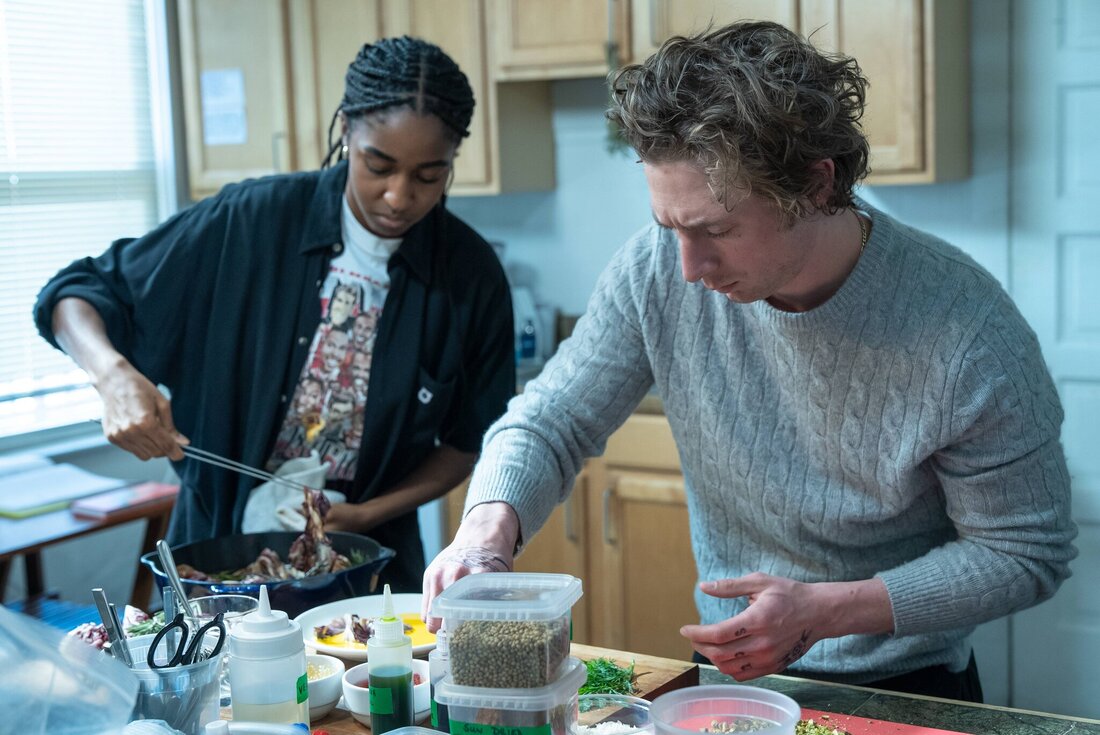
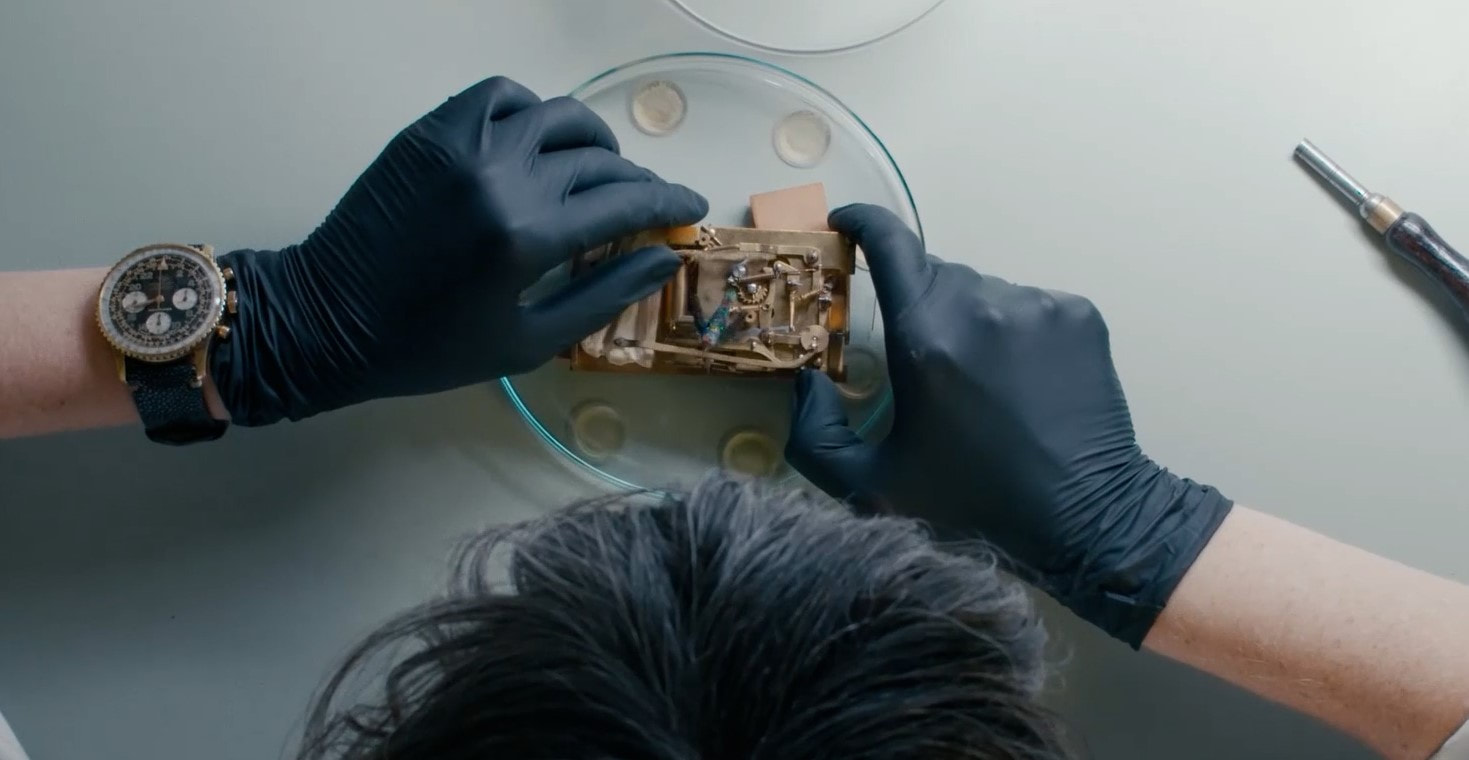
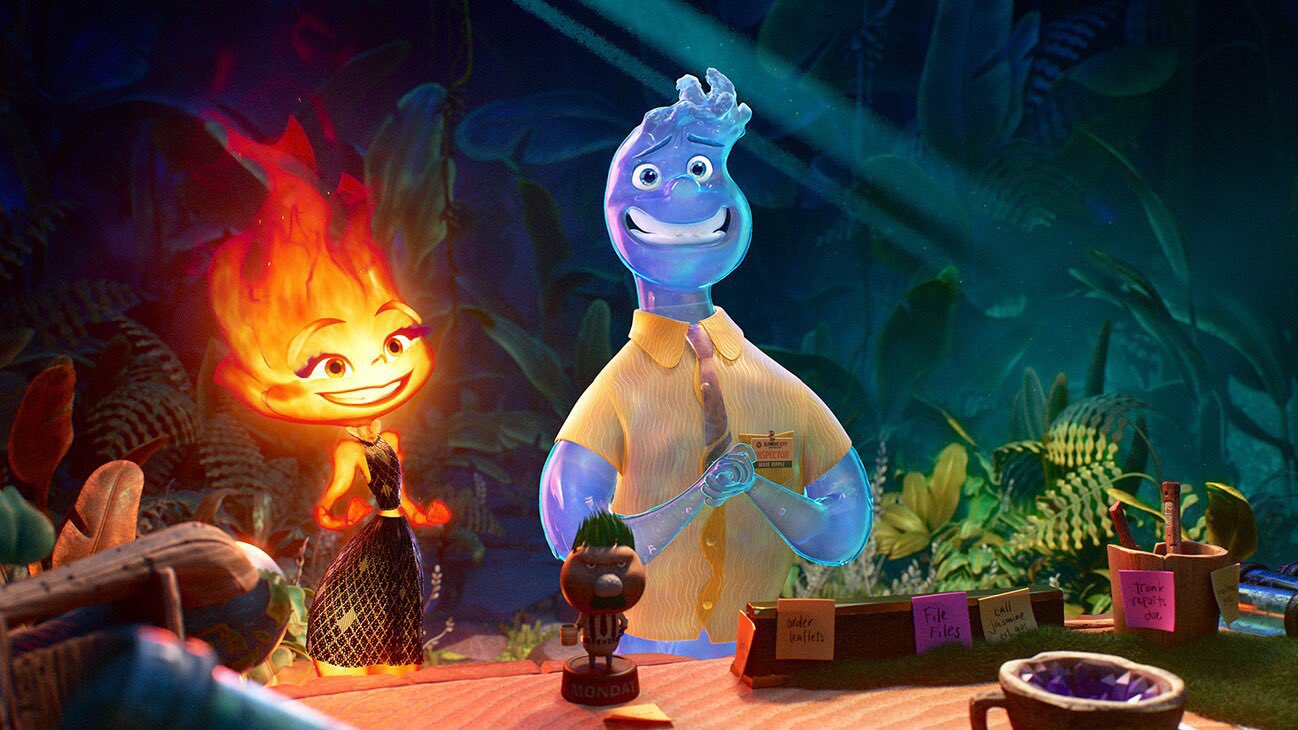


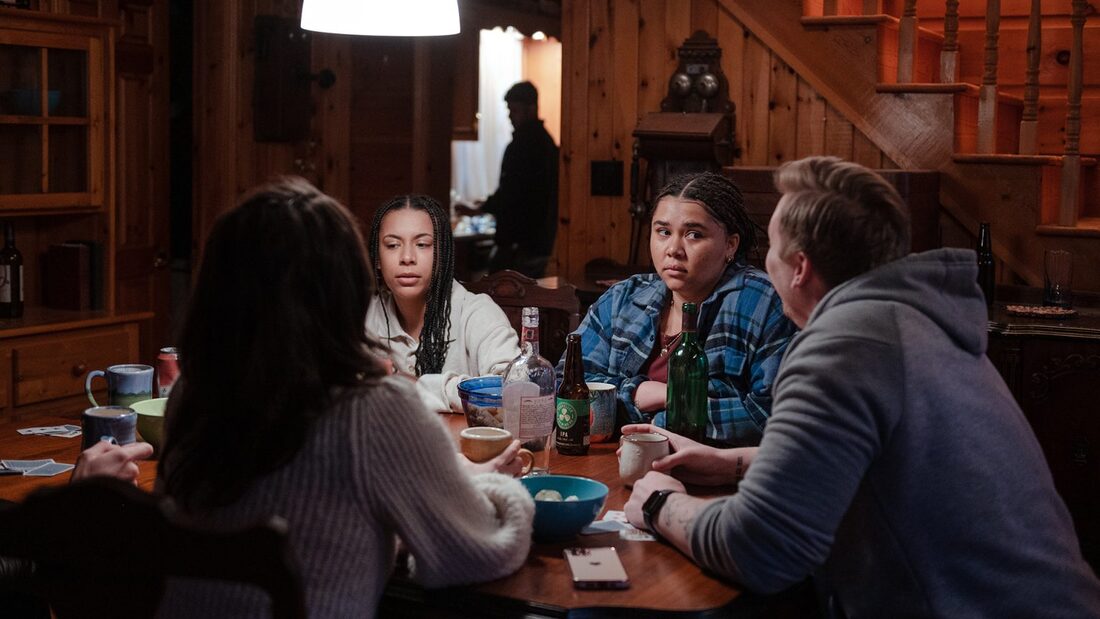
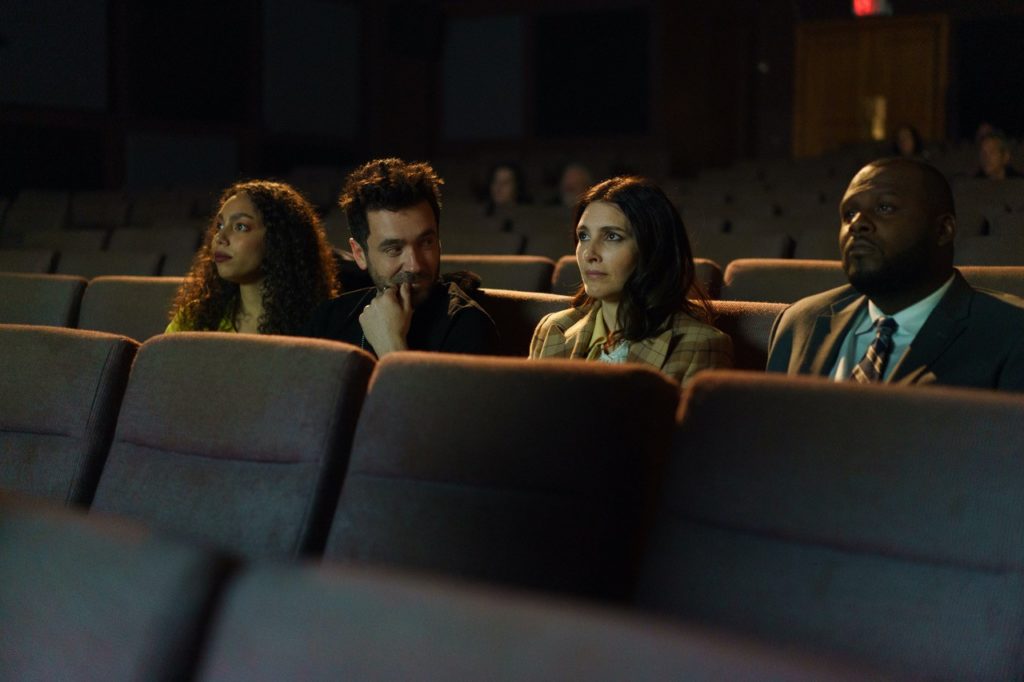
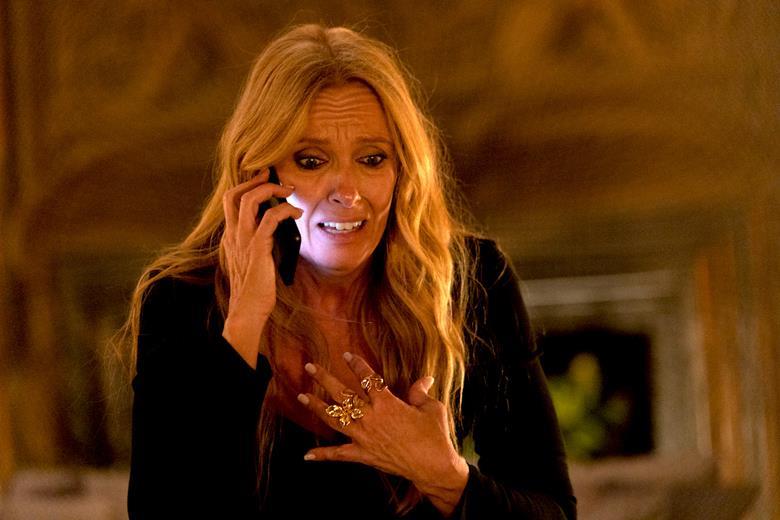
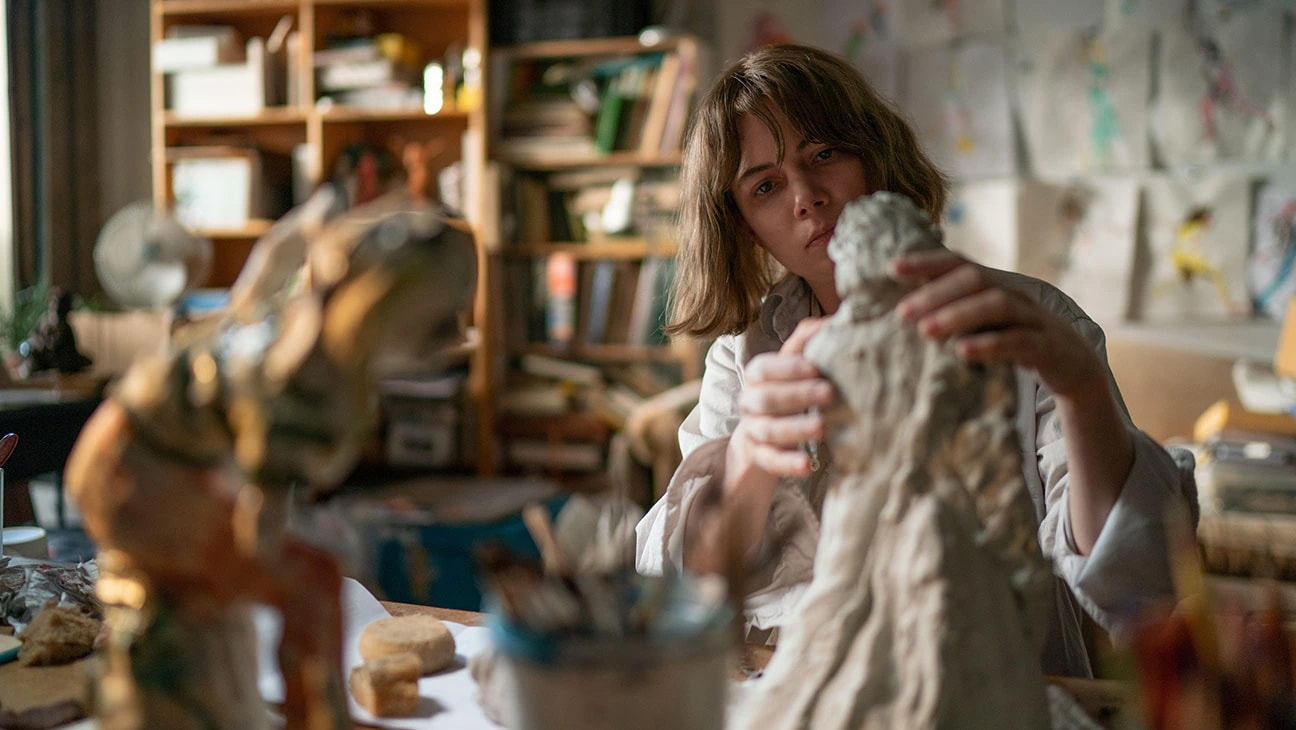
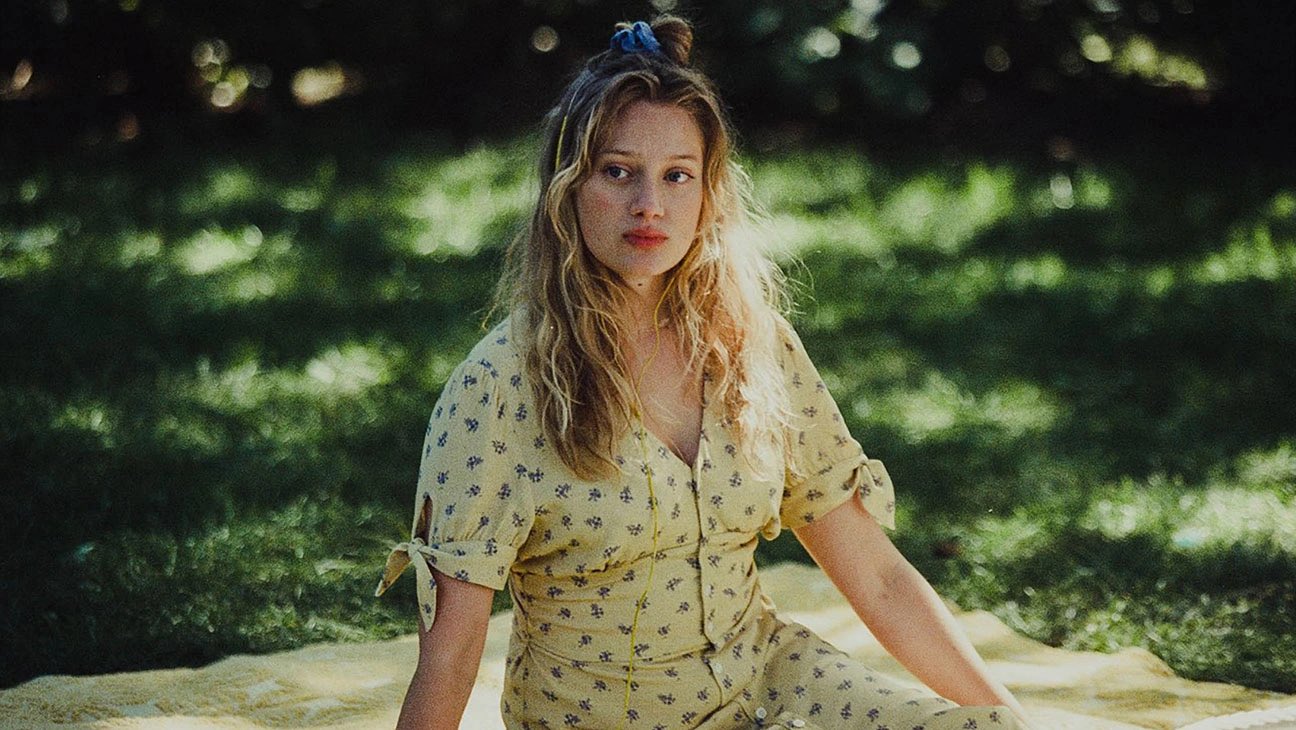
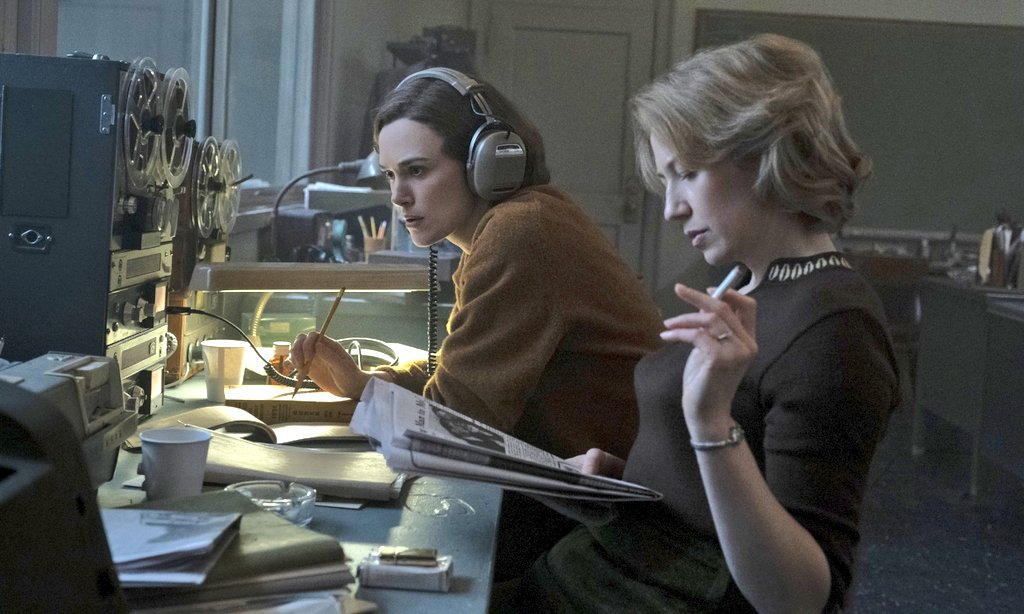
 RSS Feed
RSS Feed